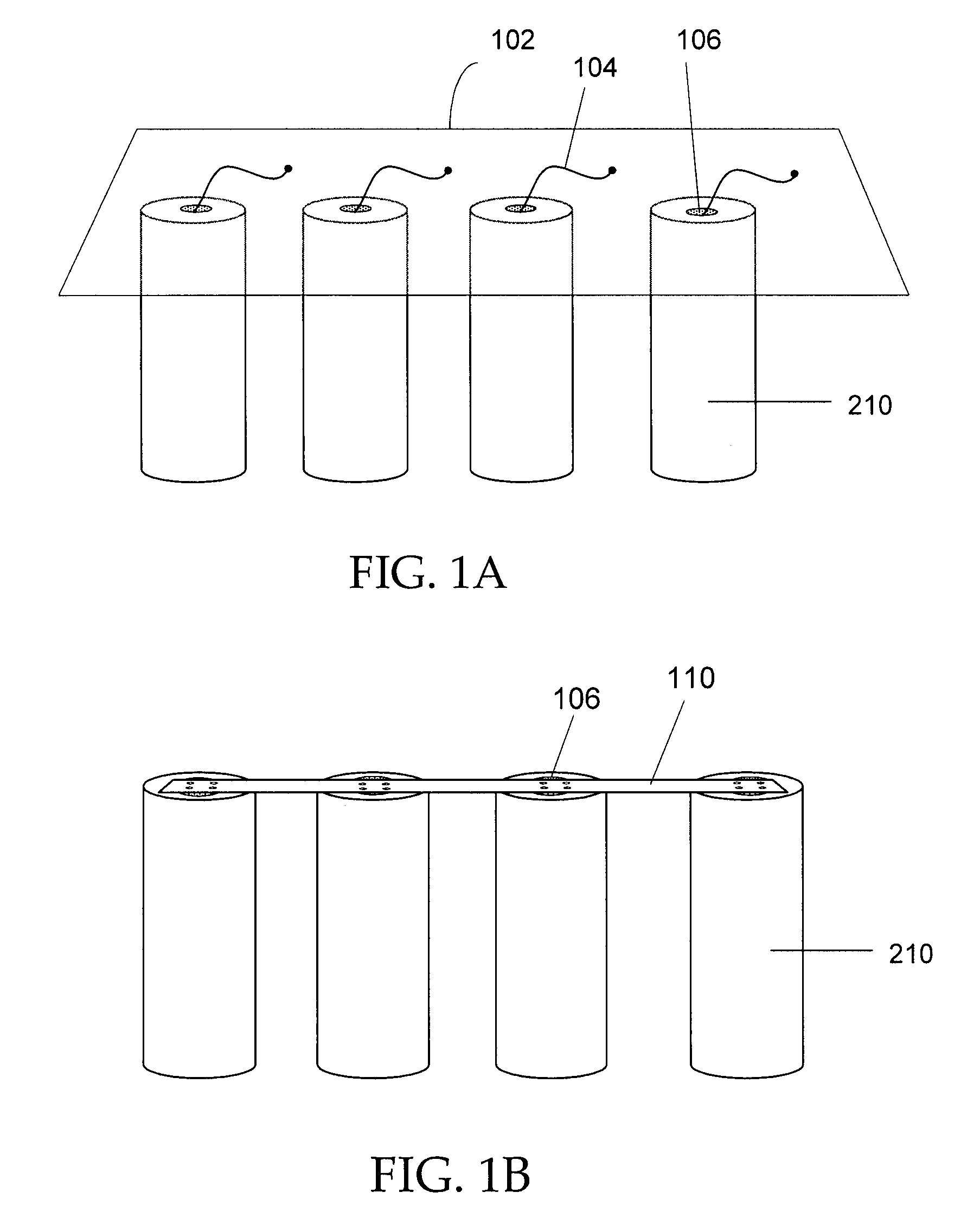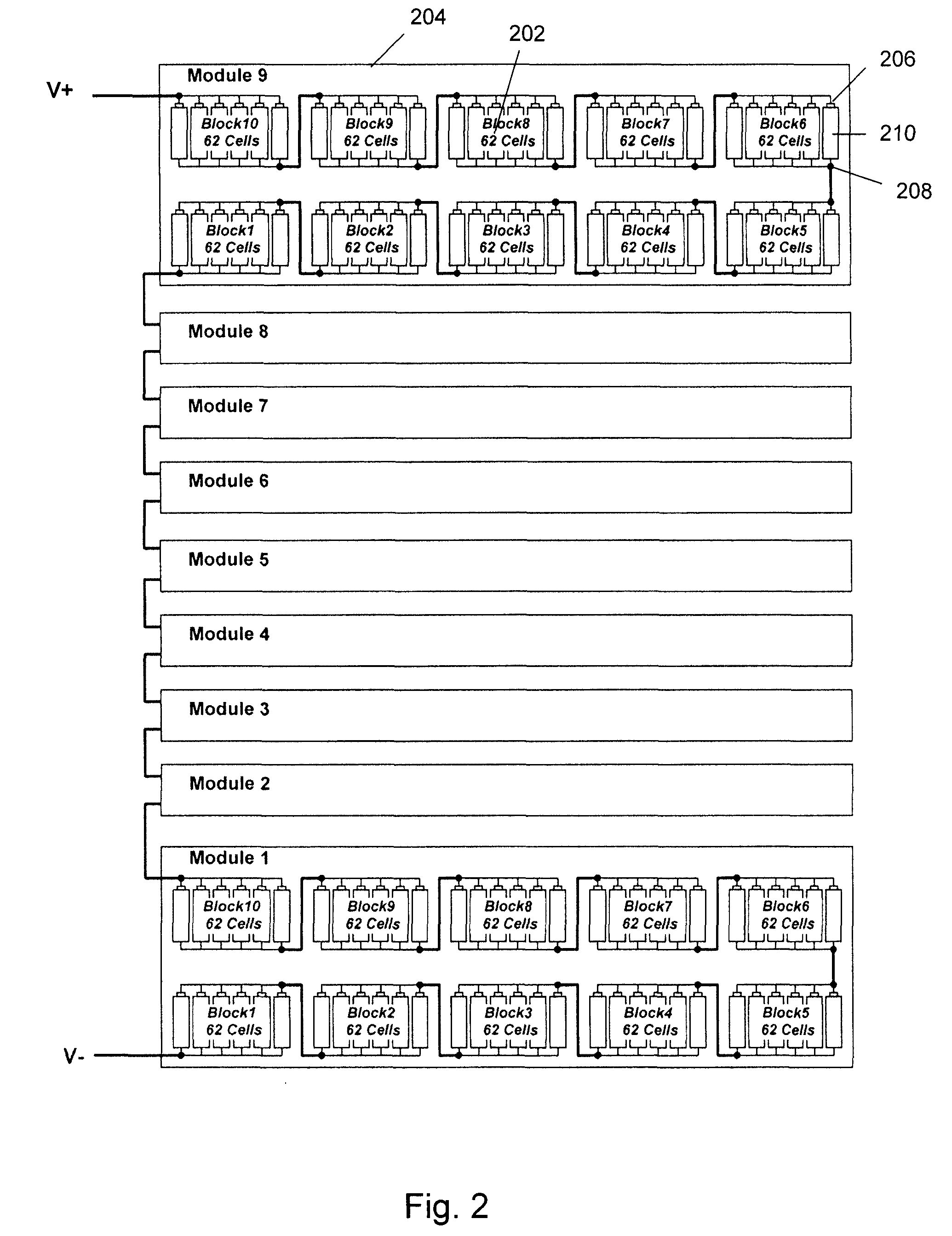Method of electrically connecting cell terminals in a battery pack
a cell terminal and battery pack technology, applied in the direction of batteries, cell components, battery/fuel cell control arrangements, etc., can solve the problems of battery pack thermal cooling efficiency poor, 9% loss of total capacity, and substantial loss of overall energy capacity
- Summary
- Abstract
- Description
- Claims
- Application Information
AI Technical Summary
Benefits of technology
Problems solved by technology
Method used
Image
Examples
Embodiment Construction
[0017]A low part-count battery pack that economically and reliably interconnects a large number of small form-factor battery cells is disclosed in various embodiments.
[0018]FIG. 2 shows one embodiment of a battery pack using a large number of small battery cells. In this embodiment, cells 210 are grouped into a number of blocks 202; blocks are in turn grouped into modules 204. In the example shown in FIG. 2, each pack comprises nine (9) modules; each module comprises ten (10) blocks; and each block comprises sixty two (62) cells. Therefore, there are a total number of five thousand five hundred and eighty (5580) cells in a pack. Each cell 210 has a positive and a negative terminal, called a cathode 206 and an anode 208, respectively. In this embodiment, the cells in each block are electrically connected in parallel, i.e., the cathodes are connected together, and the anodes are connected together. The blocks in each module are connected in series, i.e., the cathode of the first block...
PUM
 Login to View More
Login to View More Abstract
Description
Claims
Application Information
 Login to View More
Login to View More - R&D
- Intellectual Property
- Life Sciences
- Materials
- Tech Scout
- Unparalleled Data Quality
- Higher Quality Content
- 60% Fewer Hallucinations
Browse by: Latest US Patents, China's latest patents, Technical Efficacy Thesaurus, Application Domain, Technology Topic, Popular Technical Reports.
© 2025 PatSnap. All rights reserved.Legal|Privacy policy|Modern Slavery Act Transparency Statement|Sitemap|About US| Contact US: help@patsnap.com



